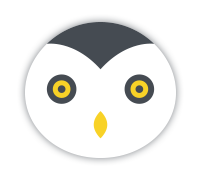overview
Casting refers to a technique using a rope to make large animals, predominantly adult cattle, lie down or become recumbent. The rope is used to apply firm, consistent pressure to points on the cow's body, causing the animal to lie down with minimal struggling. It's important to ensure that you have gained control of the cow's head before casting the animal, typically via the application of a rope halter. It's also important to plan ahead and ensure that no pressure is applied to the cow's airway once they are cast. A variety of rope casting patterns can be used: be careful not to catch the udder, prepuce or scrotum in any of the ropes.
Why are cows cast?
General anaesthesia is risky in adult cattle, as they are very prone to bloat, regurgitation and hypoventilation. Surgery is typically safer if performed under sedation and local anaesthesia, casting may therefore be required to position and restrain a sedated animal. The risk of bloat while sedated remains, so the animal should be retained in sternal recumbency where feasible. If the animal must be placed on its side right lateral recumbency is preferred, as it allows the patient to be observed for bloat. Always try and minimise the time that the animal spends on its side.
Cows may therefore be cast to facilitate procedures such as assisted calving, caesarean section, treatment of a uterine torsion or correction of a displaced abomasum.
Equipment:
- Rope halter
- 30-40' of rope
- Sedation (if necessary)
- Knife or blade (to cut rope in case of emergency)
- Protective gloves (to avoid rope burns)
Methods
You will need three people - one to control the cow's head and two to apply traction to the ropes.
Begin by placing a halter on the cow and secure the head close to ground level, this avoids hanging the cow when she goes down. Ensure the ground is suitable for recumbency - remove any large stones, sharp items etc.
There are two commonly used patterns of casting rope application: the Reuffs method and the criss-cross method (sometimes called the Burley method). The Reuffs method required the use of a non-slip knot to ensure the rope around the neck cannot tighten.
Regardless of which method is used, it's important to ensure all the slack in the ropes is removed before you pull on them, as this helps ensure the cow goes down smoothly.
Both methods in demonstrated in the videos below by Eoin Ryan, UCD Faculty of Veterinary Medicine. The videos are included here with kind permission from Eoin.
Personally, I prefer the criss-cross/Burley method for the following reasons:
- Rope is not tied around the animal
- Avoids pressure on the trachea, prepuce or milk veins
The information in this channel is provided by the Clinical Skills Centre in the School of Veterinary Medicine, University College Dublin. In some cases, there are several acceptable ways to perform a skill. Veterinary students should check whether there is a preferred method in their own University.
further reading
Holtgrew-Bohling, K. (2016). Physical Restraint of Cattle. In: Large Animal Clinical Procedures for Veterinary Technicians. 3rd ed. St Louis: Mosby Elsevier, pp.46-57.
Rockett, J. and Bosted, S. (2016). Restraint Tools and Techniques. In: Veterinary Clinical Procedures in Large Animal Practice. 2nd ed. Boston: Cengage Learning, pp.33-34.
